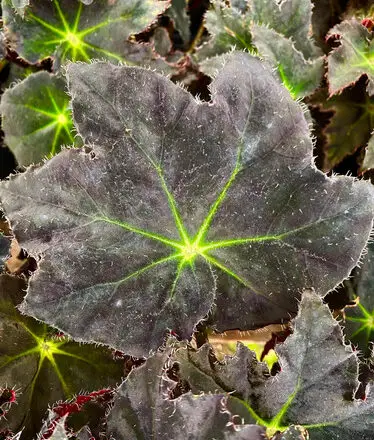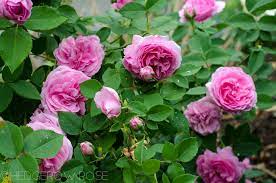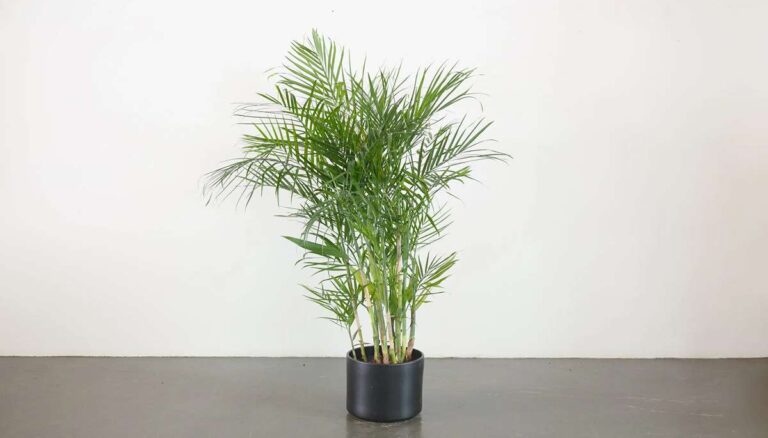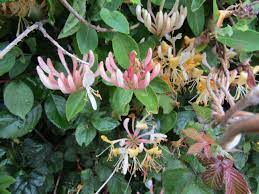Introduction
Welcome to the wonderful world of Black Velvet Begonia.’ This stunning plant, known for its lush and velvety foliage, is a delightful addition to any garden or indoor space. Whether you’re a seasoned gardener or just starting, caring for Begonia ‘Black Velvet’ can be a rewarding experience.

Begonia ‘Black Velvet’ Overview:
This begonia variety, with its captivating dark foliage, is a true standout. Its rich, velvety leaves make it a favorite among plant enthusiasts. The ‘Black Velvet’ is part of the Rhizomatous Begonia family, known for its unique growth pattern via rhizomes.
Getting to Know Its Name:
The common name, ‘Black Velvet,’ perfectly describes the plant’s appearance, while its Latin name, often a tongue-twister for beginners, is worth noting – a little botanical touch, Begonia ‘Black Velvet.’
Understanding the Type:
Categorized as a Rhizomatous Begonia, this type thrives by spreading through rhizomes. This means it has a thick, underground stem that stores water and nutrients, ensuring resilience and longevity.
In this article, we’ll explore the essential aspects of caring for Begonia’s ‘Black Velvet,’ breaking down each element in a way that even beginners can grasp. So, let’s embark on this green journey and unlock the secrets to a thriving ‘Black Velvet’ in your garden or home!
Identification
Begonia Black Velvet Common Name:
Let’s start with the basics – what do people commonly call this beautiful plant? The answer: Begonia ‘Black Velvet.’ The name perfectly captures the essence of its deep, velvety foliage. When you’re chatting with fellow plant enthusiasts or searching online, this common name will help you connect with others who appreciate this particular begonia.
Latin Name of the Plant:
Now, let’s dive into a bit of botanical flair – the Latin name. While it might sound like a mouthful, knowing the Latin name, Begonia ‘Black Velvet,’ can be useful in more formal discussions about the plant. Plus, it’s a fun detail to share when you’re showcasing your green companion to friends or on social media.
Type of Begonia – Rhizomatous:
Understanding the type of begonia you’re dealing with is crucial for proper care. Begonia ‘Black Velvet’ falls into the Rhizomatous category. What does that mean? Well, it signifies that this begonia type grows via rhizomes – thick, underground stems that store water and nutrients. This adaptation helps the plant endure varying conditions and contributes to its overall hardiness.
In the world of gardening and plant care, being familiar with the common name, Latin name, and type of your beloved Begonia ‘Black Velvet’ sets the stage for a successful and enjoyable journey. Next, we’ll explore more about its family classification and the optimal pH conditions for its growth. Let’s keep the green vibes flowing!

Botanical Details of Black Velvet Begonia
When it comes to understanding your Begonia ‘Black Velvet,’ a peek into its botanical details can be both fascinating and helpful for proper care.
Family Classification of Begonia ‘Black Velvet’:
Our ‘Black Velvet Begonia belongs to the larger family of begonias. This family is diverse, housing various begonia types with unique characteristics. Knowing this broader classification gives you a sense of the plant’s botanical relatives and can offer insights into shared care practices among begonias.
Optimal pH Conditions for Growth:
Now, let’s talk about pH – not the most thrilling topic, but crucial for your begonia’s well-being. The optimal pH conditions for Begonia ‘Black Velvet’ hover around the slightly acidic to neutral range. Aim for a pH level between 6.0 and 7.0 in the soil. This ensures that the plant can absorb nutrients effectively, promoting healthy growth and vibrant foliage.
In the world of gardening, understanding your plant’s family and the pH conditions it prefers sets the foundation for successful cultivation. As we continue our journey into the care of Begonia ‘Black Velvet,’ these botanical insights will guide us toward creating the ideal environment for our velvety friend. Stay tuned for more green wisdom!
Environmental Factors
When it comes to making your Begonia ‘Black Velvet’ thrive, paying attention to environmental factors is key. Let’s break down the essentials without getting too tangled up in complex terms.
Light Requirements for Begonia ‘Black Velvet’:
Think of your ‘Black Velvet’ as a plant sunbather – it loves bright, indirect light. Place it in a spot where it gets a good dose of filtered sunlight. Avoid harsh, direct sunlight that could scorch its velvety leaves. A happy ‘Black Velvet’ enjoys the gentle glow of light without feeling the heat.
Tolerance to Frost:
Now, let’s talk about chilly weather. ‘Black Velvet’ begonias aren’t big fans of frost. If you’re growing them outdoors and the temperature drops, consider bringing them inside or providing some protective cover. Frost can be a bit of a buzzkill for these beauties, so keep an eye on the weather forecast during colder seasons.
In simple terms, ensure your ‘Black Velvet’ gets just the right amount of light and shield it from frosty surprises. This way, you’re creating a cozy environment for your begonia to flourish. As we move forward in our care guide, we’ll delve into more aspects that make your ‘Black Velvet’ truly velvet-smooth in its growth. Ready for the next green chapter? Let’s keep going!
5. Soil Preferences
Understanding the ground beneath your ‘Black Velvet’ begonia is like ensuring it has a comfy bed to rest in. Let’s talk soil preferences without digging too deep into jargon.
Ideal Soil Composition for Cultivation:
For our ‘Black Velvet,’ think light and well-draining soil. A mix that’s rich in organic matter is perfect. You can easily create this blend by combining potting soil with perlite or vermiculite. The goal here is to strike a balance – not too heavy, not too sandy. This way, your begonia’s roots can stretch out comfortably and access the nutrients they crave.
In simpler terms, imagine your ‘Black Velvet’ is like a gourmet chef – it prefers a well-balanced and nutrient-rich soil mix. This ensures it gets the nourishment it needs without feeling bogged down by heavy soil. As we continue our journey into ‘Black Velvet’ care, this soil knowledge sets the groundwork for a healthy and happy plant. Ready to nurture your begonia’s roots? Let’s keep the soil talk rolling!
Watering Guidelines
Keeping your Begonia ‘Black Velvet’ well-hydrated is like giving it a refreshing drink – a key ingredient for a thriving plant. Let’s dive into watering guidelines without making it sound like a science experiment.
Recommended Watering Practices:
The golden rule here is moderation. ‘Black Velvet’ begonias prefer their soil to be consistently moist but not waterlogged. When the top inch of the soil feels slightly dry to the touch, that’s your cue to water. Pour water evenly across the soil surface, allowing it to seep down to the roots. Think of it as giving your plant a sip rather than a gulp.
Seasonal Variations in Water Needs:
Just like us, plants have seasonal preferences. During the growing season, which spans from late spring to early summer, your ‘Black Velvet’ may appreciate a bit more hydration. However, in the dormant period, from early spring to late winter, ease off on the watering. Let the soil dry out a bit before reaching for that watering can.
In plain terms, keep the soil consistently moist, adjust watering slightly based on the season, and avoid drowning your ‘Black Velvet.’ This way, you’re creating the perfect hydration dance for a happy and healthy begonia. Ready to master the art of watering? Let’s quench that plant thirst!
Planting and Propagation
Planting and propagating your Begonia ‘Black Velvet’ is like creating new chapters in its green story. Let’s explore these processes without making it feel like a complicated gardening novel.
Best Time for Planting Begonia ‘Black Velvet’:
Timing is everything, especially when it comes to planting. The ideal window for introducing your ‘Black Velvet’ to its new home is during late spring to early summer. This season offers a sweet spot of warmth and growth, giving your begonia the perfect start.
Propagation Methods – Stem Cuttings and Leaf Cuttings:
Now, let’s talk about expanding your begonia family. Propagation, or creating new plants from your existing ones, can be a fun journey. For ‘Black Velvet,’ you have two main options – stem cuttings and leaf cuttings.
- Stem Cuttings: During late spring to early summer, snip a healthy stem with at least a couple of leaves. Plant it in a mix of potting soil and watch as new roots sprout.
- Leaf Cuttings: In the same season, take a healthy leaf and place it in a soil mix. With a bit of patience, new little plants will emerge.
These methods are like planting magic – turning a single ‘Black Velvet’ into a whole family of begonias. As we continue our care guide, you’ll see how these simple processes contribute to a flourishing and bountiful begonia garden. Ready to create some plant magic? Let’s dive into the world of ‘Black Velvet’ propagation!
Seasonal Care
Taking care of your Begonia ‘Black Velvet’ throughout the seasons is like adapting its playlist to match the weather – a tune for every time of the year. Let’s navigate seasonal care without getting lost in a garden maze.
Care Instructions for Different Seasons:
Every season brings a new set of conditions, and your ‘Black Velvet’ appreciates a bit of tailored care.
- Spring: As the temperatures rise, it’s growth season! Amp up your watering slightly, and consider a light feeding with a balanced fertilizer to fuel its growth.
- Summer: The peak of the growing season. Keep an eye on water needs, ensuring the soil stays consistently moist. Protect your ‘Black Velvet’ from the scorching midday sun, providing filtered light.
- Fall: As temperatures cool, your begonia may slow down. Adjust watering to let the soil dry out a bit between sessions. Trim back any leggy growth.
- Winter: Dormancy sets in. Reduce watering significantly, allowing the soil to dry out. Keep your ‘Black Velvet’ in a warmer spot, away from drafts.
Special Considerations for Late Spring to Early Summer:
This is the prime time for your ‘Black Velvet.’ Ensure it gets the spotlight it deserves by providing optimal conditions for growth – bright, indirect light, well-draining soil, and consistent moisture.
In simpler terms, each season requires a bit of fine-tuning in your care routine. Think of it as adjusting the volume on your ‘Black Velvet’s’ favorite song – just enough to keep the rhythm going. As we delve deeper into our care guide, you’ll see how these seasonal nuances contribute to a happy and harmonious begonia. Ready to hit the seasonal notes? Let’s keep the care melody going!
Plant Growth and Dimensions
Understanding the life cycle and dimensions of your Begonia ‘Black Velvet’ is like having a roadmap for its journey – a guide to its green adventures. Let’s explore this without turning it into a botanical expedition.
Plant and Bloom Calendar Details:
Your ‘Black Velvet’ has its calendar, marked by growth and blooms.
- Growth Season: This typically aligns with late spring to early summer. Expect your begonia to stretch and flourish during these warmer months, showcasing its velvety leaves in all their glory.
- Bloom Season: While ‘Black Velvet’ begonias are not known for extravagant flowers, they might surprise you with small blooms during the growing season. These blooms add a subtle charm to the overall appearance.
Full-Grown Dimensions of Begonia ‘Black Velvet’: Picture your ‘Black Velvet’ at its peak – mature, lush, and thriving.
- Height: On average, these begonias reach a height of about 12 to 18 inches. This compact size makes them suitable for both indoor and outdoor spaces.
- Spread: The foliage of ‘Black Velvet’ can span around 12 to 18 inches, creating a lovely, dense display.
Understanding these growth patterns helps you envision the journey your ‘Black Velvet’ will take. From the vibrant burst of growth in late spring to the subtle blooms that might grace its foliage, each phase contributes to the unique charm of this begonia. As we continue our care guide, you’ll see how these growth insights play into the overall health and happiness of your ‘Black Velvet.’ Ready to witness the green transformation? Let’s keep the journey rolling!
Maintenance and Fertilization
Keeping your Begonia ‘Black Velvet’ in top-notch condition involves some basic maintenance and a sprinkle of fertilizer magic. Let’s delve into these aspects without making it feel like a gardening chore.
Regular Care Routines for Begonia ‘Black Velvet’:
Maintaining your ‘Black Velvet’ is like giving it a spa day – regular, simple, and oh-so-rewarding.
- Leaf Inspection: Periodically check the leaves for any signs of pests or discoloration. Wiping them gently with a damp cloth keeps them looking fresh and healthy.
- Trimming Leggy Growth: If your begonia gets a bit too enthusiastic in one direction, trim back any leggy stems. This promotes bushier growth and a more compact appearance.
Fertilization Methods and Schedule: Feeding your ‘Black Velvet’ is like giving it a nutritious meal – it thrives on a balanced diet.
- Fertilizer Type: Opt for a well-balanced, water-soluble fertilizer. Something like a 10-10-10 blend works wonders, offering a mix of essential nutrients.
- Frequency: During the growing season (late spring to early summer), feed your begonia every 4-6 weeks. In the dormant period (early spring to late winter), you can scale back to feeding every 8-10 weeks.
In simpler terms, a bit of regular TLC and the occasional nutrient boost keep your ‘Black Velvet’ in splendid condition. Think of it as the equivalent of a good skincare routine for your plant. As we wrap up our care guide, you’ll see how these maintenance practices contribute to a thriving and resilient begonia. Ready to pamper your ‘Black Velvet’? Let’s keep those green vibes alive!





